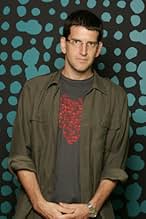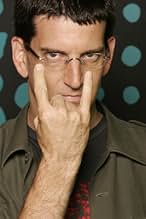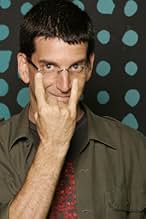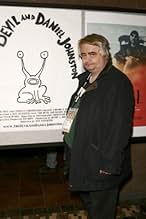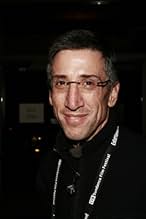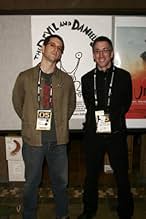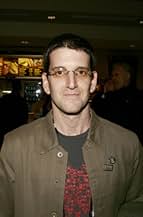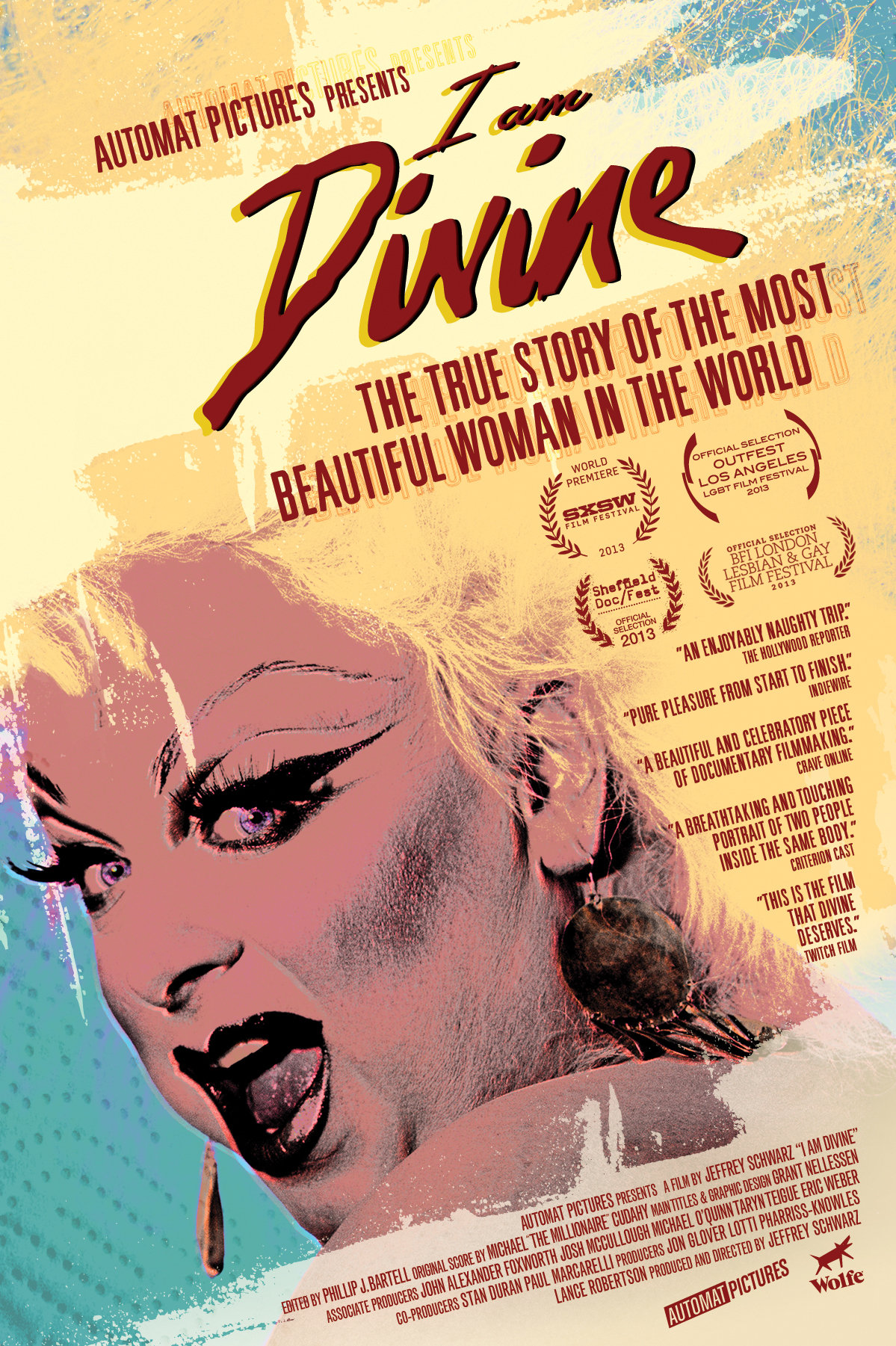IMDb रेटिंग
7.9/10
11 हज़ार
आपकी रेटिंग
अपनी भाषा में प्लॉट जोड़ेंDaniel Johnston, manic-depressive genius singer/songwriter/artist is revealed in this portrait of madness, creativity and love.Daniel Johnston, manic-depressive genius singer/songwriter/artist is revealed in this portrait of madness, creativity and love.Daniel Johnston, manic-depressive genius singer/songwriter/artist is revealed in this portrait of madness, creativity and love.
- पुरस्कार
- 2 जीत और कुल 3 नामांकन
Freddie Mercury
- Self
- (आर्काइव फ़ूटेज)
फ़ीचर्ड समीक्षाएं
I saw this little gem at the Berlinale film festival in Berlin, with the director and the producer present. It is about the life and work of Daniel Johnston, a US singer/songwriter/painter with a manic depressive condition. In opposite to the director and many of the people participating in the movie, I do not regard Daniel Johnston as a genius, but he still is a very interesting character, and some of his songs and paintings are very moving. The film is very well done, quite uplifting and entertaining, with a big love for the main character and at the same time a nice and unoffensive sense of humor. I definitely recommend it, whether you are a fan of Daniel Johnstion or not. 9 out of 10.
10lokidog
This film take you on a journey into a creative genius' struggle with life. Daniel Johnston recorded his entire life on cassette tape and his early life on film. Later he appeared on MTV, and in venues in Austin, TX on film and video. These provide the film-maker with a wide array of media for telling this story.
Jeff Feuerzeig weaves this material seamlessly into what is one of the most emotionally wrenching films I've seen in the last year and one of my favorite documentaries ever. It is hard to compare this film with documentaries like those of Michael Moore which are comedic and topical, or those of Errol Morris, which tend to focus on issues and facts. This documentary brings emotional threads and creativity into play in a way that dissolves the usual harsh contrast between a story and it's telling. You forget you are watching a documentary film, and become immersed in Daniel's life. Daniel's effect on those around him is interwoven with his own recordings. His family and friend are there to add to his story to show how his life is reflected upon them. Feuerzeig use of Daniel's parents narrative is simply masterful - it provides important information, and at the same time illustrates the the emotional turmoil his illness causes in the lives of those that love him. Daniel's family is portrayed from the early period of his illness when they have no idea what mental illness really means, to the present time when they become his supporters and advocates. Eventually, family and friend's are shown coming to terms with Daniel's mental illness, and experience their own emotional growth as well.
It deservedly won the Directors Award at Sundance 2005, and I think it would have won the audience award if it had a different play schedule.
Jeff Feuerzeig weaves this material seamlessly into what is one of the most emotionally wrenching films I've seen in the last year and one of my favorite documentaries ever. It is hard to compare this film with documentaries like those of Michael Moore which are comedic and topical, or those of Errol Morris, which tend to focus on issues and facts. This documentary brings emotional threads and creativity into play in a way that dissolves the usual harsh contrast between a story and it's telling. You forget you are watching a documentary film, and become immersed in Daniel's life. Daniel's effect on those around him is interwoven with his own recordings. His family and friend are there to add to his story to show how his life is reflected upon them. Feuerzeig use of Daniel's parents narrative is simply masterful - it provides important information, and at the same time illustrates the the emotional turmoil his illness causes in the lives of those that love him. Daniel's family is portrayed from the early period of his illness when they have no idea what mental illness really means, to the present time when they become his supporters and advocates. Eventually, family and friend's are shown coming to terms with Daniel's mental illness, and experience their own emotional growth as well.
It deservedly won the Directors Award at Sundance 2005, and I think it would have won the audience award if it had a different play schedule.
Gifted but troubled artist makes a comeback with the aid of loving parents and good psychiatric care
Biodoc about Daniel Johnston, a multitalented man, a compulsively prolific cartoon artist, song writer and performer, whose bipolar disorder and drug abuse led to episodes of severe mental illness and destructive behaviors, beginning in his early 20s, in the 1980s, problems that stifled his career for many years, until consistent psychiatric care and kindly parental oversight effected a more stable course for him more recently. Now approaching age 45, Johnston has made a comeback of sorts, reaching a level of artistic self control and productivity that has swept him toward unprecedented recognition.
This film charts Johnston's life and family, ingeniously assimilating materials made by Johnston himself as a kid and young adult - super 8 and video footage; cassette audiotapes; still photos as well as contemporary video interviews and stills. By mid-adolescence he was holed up in the basement of his family's home, staying up all hours, writing songs, drawing, making tapes almost nonstop. By his mid-20s he had run away to Austin, Texas, and made a splash on the pop music scene there. But within a year or two, abetted by lots of marijuana and LSD, he began a series of horrendous manic and depressive episodes that scuttled his career, even as he was beginning to receive recognition locally and on a national level.
For much of the next 15 years Johnston was hospitalized frequently after extremely dangerous manic episodes (he seriously injured one acquaintance with a lead pipe, and later interfered with control of his father's small aircraft, leading to a crash landing that, luckily, both survived), zoned out on medications, and vegetating at the family home in Waller, Texas. But in the past few years his course has stabilized.
He's obese, the result of his mood stabilizing medications and inactivity no doubt, and he's no longer the flamboyant, zany free spirit that titillated and frightened so many of his followers in the past. But the film shows us that he is now in better control of his drawing and singing performances than he ever was years earlier. He has been helped immensely by his parents, Bill and Mabel, now in their early 80s, his agent and owner of a small recording company, Jeff Tartakov, and an Austin music journalist, Louis Black, all of whom have worked hard to help sustain and enhance Johnston's reputation as a creative artist.
Their loyal efforts have been well rewarded. The film demonstrates the success of a show of Johnston's more recent drawings at Gallery Zero One in Los Angeles, where over 90% of the works were sold to a single collector before the exhibition even opened. In 2003 Johnston sang before an audience in Sweden that obviously worshiped him. Cartoonist Matt Groening is a fan of Johnston's. Tom Waits and Beck, among many others, have covered his songs. And just a few weeks ago (subsequent to the film) the Whitney Museum in Manhattan announced that Johnston's works would be included in the 2006 Whitney Biennial.
From a psychiatric perspective, a good case can be made that Johnston does suffer from bipolar disorder. But he was compulsively creating art years before his first episode of mood disorder. Like Vincent Van Gogh and some other compulsive artists, Johnston may also have Asperger's Syndrome.
This film is very well crafted until near the end. Actually it seems as if the filmmakers really didn't know how or when to end it. There are a half dozen moments in the last 20 minutes when they could have done so. See more, including examples of Johnston's art work, at these websites: www.museumoflove.com and www.rejectedunknown.com/feature.htm. My grade: B+ 8/10.
This film charts Johnston's life and family, ingeniously assimilating materials made by Johnston himself as a kid and young adult - super 8 and video footage; cassette audiotapes; still photos as well as contemporary video interviews and stills. By mid-adolescence he was holed up in the basement of his family's home, staying up all hours, writing songs, drawing, making tapes almost nonstop. By his mid-20s he had run away to Austin, Texas, and made a splash on the pop music scene there. But within a year or two, abetted by lots of marijuana and LSD, he began a series of horrendous manic and depressive episodes that scuttled his career, even as he was beginning to receive recognition locally and on a national level.
For much of the next 15 years Johnston was hospitalized frequently after extremely dangerous manic episodes (he seriously injured one acquaintance with a lead pipe, and later interfered with control of his father's small aircraft, leading to a crash landing that, luckily, both survived), zoned out on medications, and vegetating at the family home in Waller, Texas. But in the past few years his course has stabilized.
He's obese, the result of his mood stabilizing medications and inactivity no doubt, and he's no longer the flamboyant, zany free spirit that titillated and frightened so many of his followers in the past. But the film shows us that he is now in better control of his drawing and singing performances than he ever was years earlier. He has been helped immensely by his parents, Bill and Mabel, now in their early 80s, his agent and owner of a small recording company, Jeff Tartakov, and an Austin music journalist, Louis Black, all of whom have worked hard to help sustain and enhance Johnston's reputation as a creative artist.
Their loyal efforts have been well rewarded. The film demonstrates the success of a show of Johnston's more recent drawings at Gallery Zero One in Los Angeles, where over 90% of the works were sold to a single collector before the exhibition even opened. In 2003 Johnston sang before an audience in Sweden that obviously worshiped him. Cartoonist Matt Groening is a fan of Johnston's. Tom Waits and Beck, among many others, have covered his songs. And just a few weeks ago (subsequent to the film) the Whitney Museum in Manhattan announced that Johnston's works would be included in the 2006 Whitney Biennial.
From a psychiatric perspective, a good case can be made that Johnston does suffer from bipolar disorder. But he was compulsively creating art years before his first episode of mood disorder. Like Vincent Van Gogh and some other compulsive artists, Johnston may also have Asperger's Syndrome.
This film is very well crafted until near the end. Actually it seems as if the filmmakers really didn't know how or when to end it. There are a half dozen moments in the last 20 minutes when they could have done so. See more, including examples of Johnston's art work, at these websites: www.museumoflove.com and www.rejectedunknown.com/feature.htm. My grade: B+ 8/10.
I saw this at the SXSW movie festival. This movie portrays the legendary song-writer (fans of his consist of: Sonic Youth, Curt Cobain, Beck, etc.), Daniel Johnston's roller-coaster life: through his early recordings in his basement to being on MTV to his battles with manic depression(which caused him to have delusions) to his art and comics and ending up in mental hospitals. Throughout the movie the film looks at Daniel's life through friends and family. Honestly, even if you aren't a fan you'd enjoy it. Even the way it was filmed and put together is so unique it was amazing to watch. A must see for any Daniel Johnston fan.
The first section of the film has to do with the early life of Daniel Johnston as well as his being discovered by the musical world in the 1980s. Most of this didn't interest me at all--especially because I hated his music. When the film tried to convince me of his genius, it completely lost me, as he sounded just awful and hurt my ears (though I do acknowledge that he does have a small cult following who see him as a great genius). He definitely is not nor ever has been "mainstream" and this section of the film was poor compared to the last 3/4 of the film. It just didn't do much to compel the average viewer.
However, when it talked about his descent into madness, then the film came to life and became much more compelling. This section of the film was much longer and seemed to be the most important point of this documentary. The impact on Daniel, his family and those around him was profound and very sad to watch.
Because of my background, I have additional insight into the psychiatric state of Daniel Johnston during the film. As I watched, I noticed that although the film mentions that Daniel had "Manic-Depressive Disorder" (i.e., Bipolar Disorder), there was compelling evidence that a more correct diagnosis might have been a Schizoaffective Disorder. In essence, this is Bipolar Disorder along with Schizophrenia, as Daniel's behaviors and thinking always have a bizarreness that isn't classic "mania"--where you'd typically see bizarreness mostly during manic stages. He was so disorganized, occasionally hostile and had such bizarre thinking that this seems like the correct diagnosis instead of Bipolar Disorder. His talking about demons and obsession with his own self-styled religion is just plain weird. Additionally, the hospital prescribing Haldol is indicative of a more severe thought disorder. Normally, with a Bipolar Disorder, they would prescribe antidepressants or Lithium--not a severe mind-altering drug like Haldol. Haldol is practically an elephant tranquilizer and patients on it often are somewhat zombie-like--and it's often given to violent and severely psychotic patients in emergency rooms.
Late in the film, there was an emphasis on Daniel's artwork--not just his music. Despite many declaring it to be great, I found it fascinating because it gave great insight into Daniel's twisted vision of the world--with drawings of devils, monsters and a man whose head is cut in half (a representation of himself). Did I think it was "great"? No--far from it, but the insight it gave was incredible. And, at times, the claims others made about his greatness seemed a bit like hyperbole (saying he was the equal to Brian Wilson for example).
A fascinating film that was well-constructed--using audio tapes, video, interviews and a few scenes of Daniel today. Well made and worth a look.
However, when it talked about his descent into madness, then the film came to life and became much more compelling. This section of the film was much longer and seemed to be the most important point of this documentary. The impact on Daniel, his family and those around him was profound and very sad to watch.
Because of my background, I have additional insight into the psychiatric state of Daniel Johnston during the film. As I watched, I noticed that although the film mentions that Daniel had "Manic-Depressive Disorder" (i.e., Bipolar Disorder), there was compelling evidence that a more correct diagnosis might have been a Schizoaffective Disorder. In essence, this is Bipolar Disorder along with Schizophrenia, as Daniel's behaviors and thinking always have a bizarreness that isn't classic "mania"--where you'd typically see bizarreness mostly during manic stages. He was so disorganized, occasionally hostile and had such bizarre thinking that this seems like the correct diagnosis instead of Bipolar Disorder. His talking about demons and obsession with his own self-styled religion is just plain weird. Additionally, the hospital prescribing Haldol is indicative of a more severe thought disorder. Normally, with a Bipolar Disorder, they would prescribe antidepressants or Lithium--not a severe mind-altering drug like Haldol. Haldol is practically an elephant tranquilizer and patients on it often are somewhat zombie-like--and it's often given to violent and severely psychotic patients in emergency rooms.
Late in the film, there was an emphasis on Daniel's artwork--not just his music. Despite many declaring it to be great, I found it fascinating because it gave great insight into Daniel's twisted vision of the world--with drawings of devils, monsters and a man whose head is cut in half (a representation of himself). Did I think it was "great"? No--far from it, but the insight it gave was incredible. And, at times, the claims others made about his greatness seemed a bit like hyperbole (saying he was the equal to Brian Wilson for example).
A fascinating film that was well-constructed--using audio tapes, video, interviews and a few scenes of Daniel today. Well made and worth a look.
क्या आपको पता है
- ट्रिवियाAs seen in the DVD extras, Daniel and Laurie would meet again after 30+ years following a screening of this film. She said she kept every memento he gave her and was grateful that he always built up her self esteem and said so many nice things to her when they were friends. The two shared a beautiful moment with a nice hug when they saw each other again.
- भाव
Daniel Johnston: I never met a girl I didn't meet.
- कनेक्शनFeatured in Segundo aniversario (2007)
- साउंडट्रैकSilly Love
Written by Daniel Johnston
Performed by Daniel Johnston
Published by Eternal Yip Eye Music (BMI)
Administered by BUG Music Publishing
टॉप पसंद
रेटिंग देने के लिए साइन-इन करें और वैयक्तिकृत सुझावों के लिए वॉचलिस्ट करें
- How long is The Devil and Daniel Johnston?Alexa द्वारा संचालित
विवरण
बॉक्स ऑफ़िस
- US और कनाडा में सकल
- $3,34,450
- US और कनाडा में पहले सप्ताह में कुल कमाई
- $23,192
- 2 अप्रैल 2006
- दुनिया भर में सकल
- $4,32,339
- चलने की अवधि1 घंटा 50 मिनट
- रंग
- ध्वनि मिश्रण
- पक्ष अनुपात
- 1.85 : 1
इस पेज में योगदान दें
किसी बदलाव का सुझाव दें या अनुपलब्ध कॉन्टेंट जोड़ें



